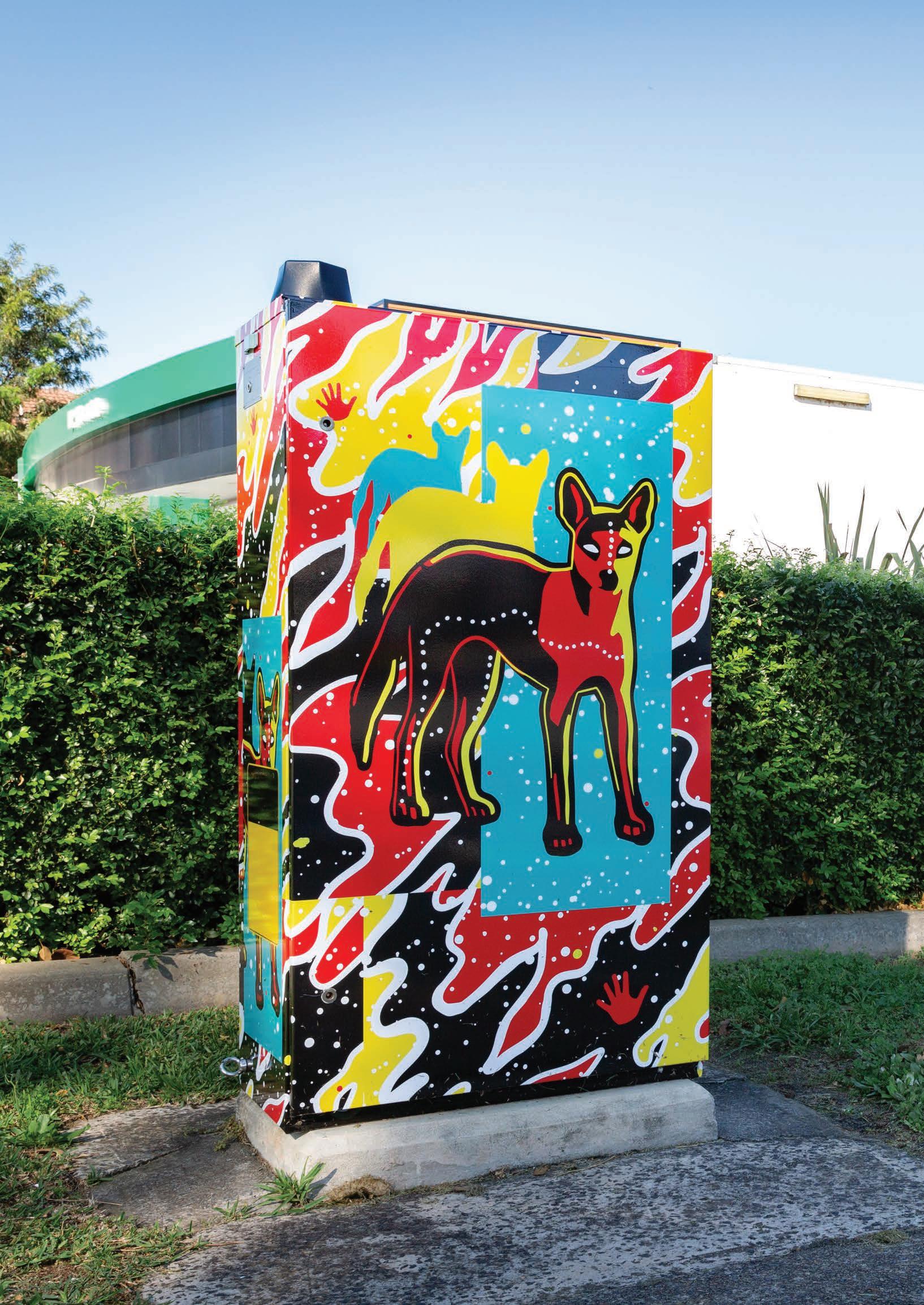
5 minute read
ART AND CULTURE
Opposite Page: Signal box featuring the artwork of Jessica Johnson at Mortdale
Left: Signal box artwork by David Cragg at Hurstville
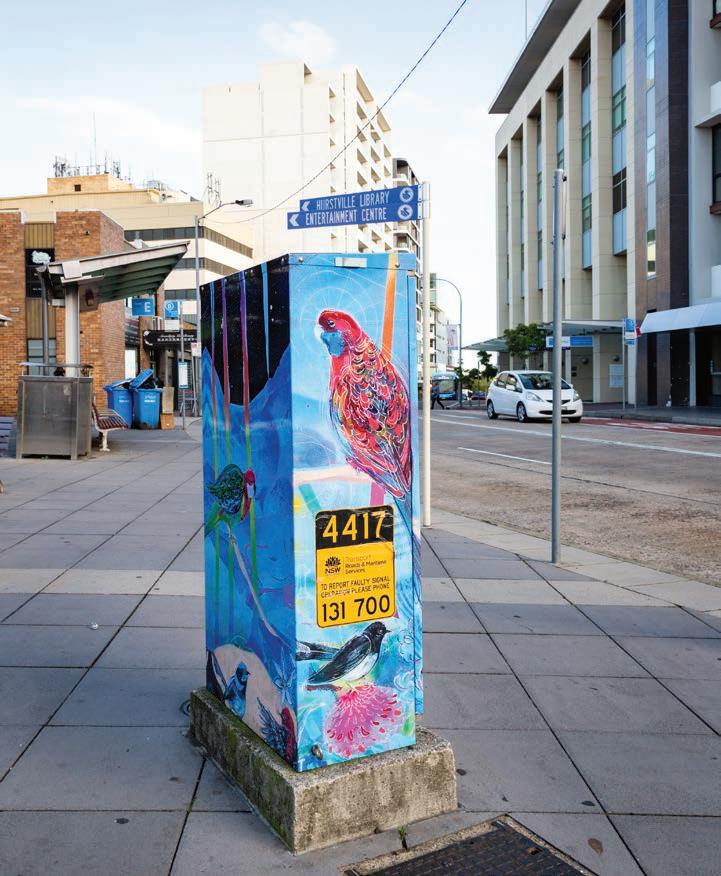
Below: Part of MAN.De's mural for the corner of MacMahon and Dora Streets
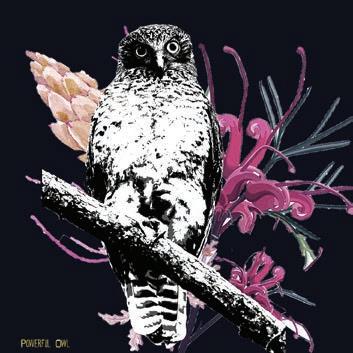
Blankcanvases are everywhere!
You might have noticed some public artworks popping up around the Georges River area. Have you spotted one of the 15 traffic signal boxes that have been transformed into works of art? What about the murals near the Georges River Service Centre?
Georges River Council recently adopted its Public Art Policy, with an emphasis on increasing the amount of high-quality public art within our City. Our aspiration is for public art to be an everyday experience that expresses the community’s unique attributes, culture, heritage and people. Artist MAN.De will revitalise the corner of MacMahon and Dora Street, Hurstville, creating a work that highlights the challenges of nature in an urban environment and the importance of the relationship between our environment and humans.
“In my work I often give a voice to those who need it the most. Today we are more disconnected from our natural world than ever before and we need to change that. We have this innate affiliation with nature and when we are surrounded by it, or even viewing scenes of nature, it reduces anger, fear and stress and increases pleasant feelings. I also want to remind people of their crucial role as custodians of our local flora and fauna,” said MAN.De.
The designs on the traffic signal boxes have been created by Sydney-based artists, with more planned in the coming months.
Want to see art in your area?
If you’ve seen a place you think would be perfect for some public art, or a traffic signal box that needs some love, let us know via mail@georgesriver.nsw.gov.au
ART AND CULTURE
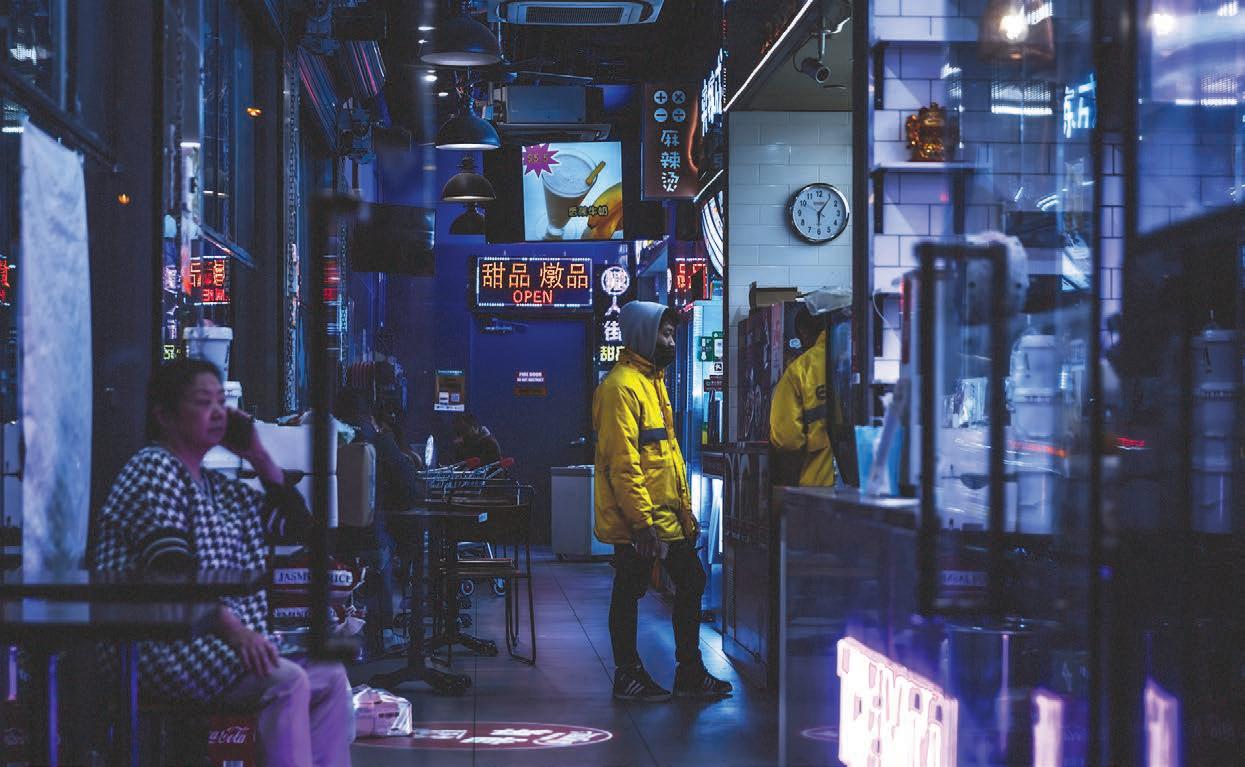
Capturing the COVID-19 shutdown in our community
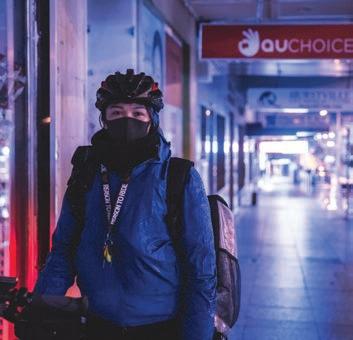

The current situation is one that we may never see again in our lifetimes.
Local artist Elder, has made the most of a unique social situation, capturing the atmosphere of local businesses and scenes of isolation across the Georges River area during the recent restrictions.
These photographs and more will be added to the Georges River Libraries Local Studies collection, and form an important lasting resource for our community.

To find out more about the artist, visit @elderlad on Instagram and to see the Local Studies collection visit georgesriver.spydus.com
Images by @elderlad.
Newartworks to showcase livingAboriginal historyof Georges River
Georges River Council is pleased to share three newly commissioned artworks by local Aboriginal artist, Aunty Annette Webb. You’ll see these works popping up across the city to acknowledge the living Aboriginal history and culture of the Georges River area.
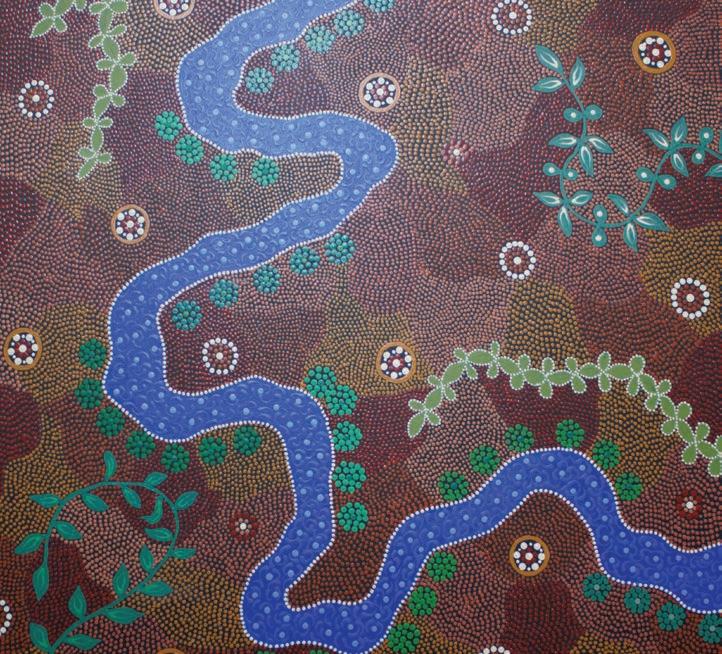
Annette is a proud Dunghetti woman, who has lived in the Georges River area for the past 30 years. Having graduated from the Eora College with a Bachelor of Fine Arts, Annette has taught Aboriginal art at Seaforth TAFE and exhibited her artworks widely, including at the 2019 Dragon’s Lair Gallery group exhibition, Brush without fame, as part of the Kurranulla Aboriginal Corporation at Hurstville Museum & Gallery.
These three artworks respond to the themes of land, water and community will be accessioned into the Hurstville Museum & Gallery art collection.

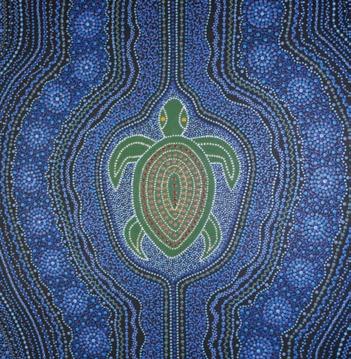
Clockwise from top: Land, Water, Community by Annette Webb.
Image: Who stood there by Soupsue
Newexhibition takes a stand
Former Artist in Residence, Soupsue, will showcase her new body of work, Who Stood Here at Hurstville Museum & Gallery's Dragon's Lair Gallery from 9 June to 5 July.
Soupsue’s work reacts to the remnants of Australian history and people that are imprinted on the local landscape. The audience is asked to reflect on the multitude of layered lives that are interwoven in the emotional and physical landscape of Australia; wanting us to investigate what we remember, what we deny, what we have forgotten and what we leave behind.
ART AND CULTURE
Hurstville Museum & Gallery has now reopened!
Opening hours:
Tuesday – Friday, 10.00am - 4.00pm Saturday, 10.00am - 2.00pm Sunday, 2.00pm - 5.00pm Come in and say hi, but please remember to abide by the 1.5m distancing guidelines.
An explosion of artistic ideas at Hurstville Museum & Gallery
Artbomb: connect + create brings together artists, our local community and Hurstville Museum & Gallery in a slow release explosion of creativity and artistic expression.
This exhibition provides a unique opportunity to meet and collaborate with professional artists, as they work within the Hurstville Museum & Gallery space to create a diverse range of artworks.
We're inviting the community to come in and get involved with this experimental exhibition. Drop by every Tuesday, Thursday and Saturday to see a new work being created.
Come in and reconnect!
When: 9 June – 26 July 2020 Where: Hurstville Museum & Gallery

Hurstville Museum & Gallery needs yourhelp!
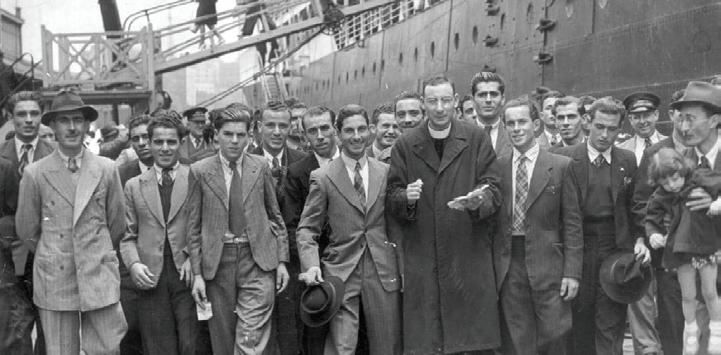
Hurstville Museum & Gallery is currently seeking stories, information, photographs and historical items for two upcoming exhibitions exploring the Chinese and Italian migration histories of our area.
Chinese migration and settlement in the St George area has a long and continuous history. The upcoming exhibition will bring this history to life through historical material, personal stories and artist’s interpretations.
From the 1860s onwards, Chinese migrants developed market gardens to make their living. Later in the 19th century, many shops and businesses were Chinese run, and by Federation in 1901, Chinese people represented a significant part of the community. Today 27% of our population has Chinese heritage.
Our planned exhibition on the Italian migrant hostel ‘Villa Fatima’ will explore the important role the hostel played in the story of early Italian migration to Australia following the Second World War.
The hostel was located in the former ‘Woodleigh’ hospital, on Woniora Road, Hurstville, and was established by the Capuchin Franciscan Fathers in Leichhardt. Villa Fatima was intended to house between 50 to 60 migrants, mostly single young men, and was the only non-Government run hostel in south-west Sydney.
The stories of the Villa Fatima are of great significance to understanding early Italian migration to the Georges River area in the post war period.
Hurstville Museum & Gallery is keen to hear from those who have stories, photos, historical objects and information to share regarding the Chinese heritage of our area or the history of the Villa Fatima migrant hostel.
We'd love to hear from you!
To share your stories, please contact Hurstville Museum & Gallery via museumgallery@georgesriver.nsw.gov.au







